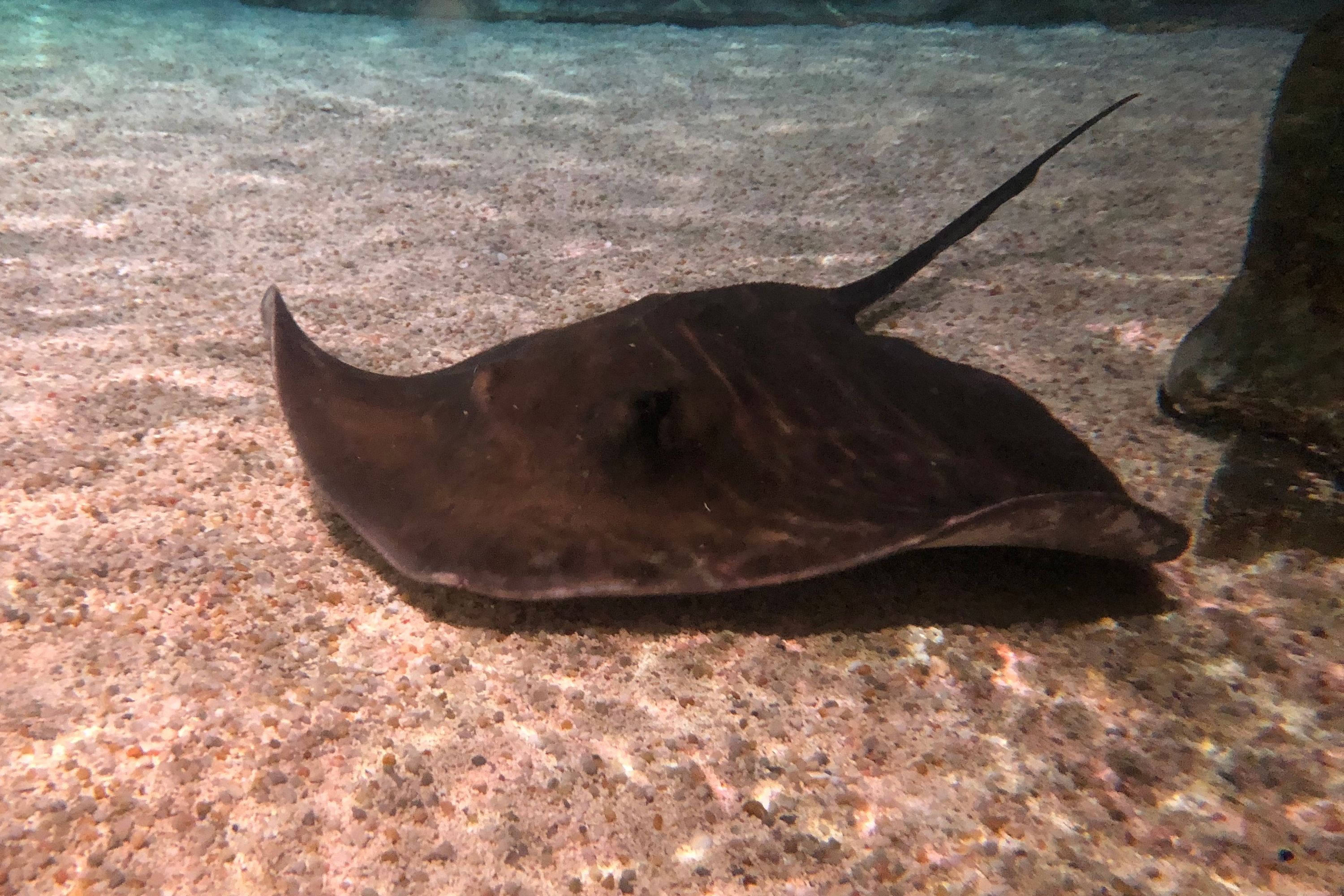Short-tail stingray
(Bathytoshia brevicaudata)

Description
The short-tail stingray or smooth stingray (Bathytoshia brevicaudata) is a common species of stingray in the family Dasyatidae. It occurs off southern Africa, typically offshore at a depth of 180-480 m (590-1,570 ft), and off southern Australia and New Zealand, from the intertidal zone to a depth of 156 m (512 ft). It is mostly bottom-dwelling in nature and can be found across a range of habitats from estuaries to reefs, but also frequently will swim into open water. One of the largest stingrays in the world, this heavy-bodied species can grow upwards of 2.1 m (6.9 ft) across and 350 kg (770 lb) in weight. Its plain-colored, diamond-shaped pectoral fin disc is characterized by a lack of dermal denticles even in adults, and white pores beside the head on either side. The body can have colors as well as dark grey or black with rows of white spots along each wing. Its tail is usually shorter than the disc and thick at the base. It is armed with large tubercles and a midline row of large thorns in front of the stinging spine which has the dorsal and ventral fin folds behind. The diet of the short-tail stingray consists of invertebrates and bony fishes, including burrowing and midwater species. It tends to remain within a relatively limited area throughout the year, preferring deeper waters during the winter, and is not known to perform long migrations. Large aggregations of rays form seasonally at certain locations, such as in the summer at the Poor Knight Islands off New Zealand. Both birthing and mating have been documented within the aggregations at Poor Knights. This species is aplacental viviparous, with the developing embryos sustained by histotroph ("uterine milk") produced by the mother. The litter size is typically 6 -10, but litter sizes of up to fifteen are not unheard of. The short-tail stingray is not aggressive, but is capable of inflicting a lethal wound with its long, venomous sting. It is often caught incidentally by commercial and recreational fisheries throughout its range, usually surviving to be released. Because its population does not appear threatened by human activity, the International Union for Conservation of Nature (IUCN) lists it under least concern. Heavily built and characteristically smooth, the pectoral fin disc of the short-tail stingray had a rather angular, rhomboid shape and is slightly wider than long. The leading margins of the disc are very gently convex, and converge on a blunt, broadly triangular snout.
Taxonomic tree:







